Introduction to B2C and B2B Sales

What Does "Business to Consumer" and "Business to Business" Sales Mean
Business to Consumer (B2C) and Business to Business (B2B) sales refer to the specific targets of a business's sales efforts. Each model has distinct characteristics, approaches, and strategies suited to their respective audiences.
Business to Consumer (B2C)
B2C sales involve selling products or services directly to individual consumers. This model is focused on personal consumption and typically involves products or services that satisfy personal needs or desires.
- Characteristics: B2C sales often have shorter sales cycles, lower price points, and a wider audience. The decision-making process is generally simpler, involving one or a few individuals.
- Strategies: Marketing efforts are directed at engaging the consumer's emotions, desires, and personal benefits. This can involve extensive use of social media, online advertising, and content marketing that appeals directly to the consumer's lifestyle and interests.
Business to Business (B2B)
B2B sales involve selling products or services from one business to another. These transactions are typically more complex, involving products or services that help other businesses operate, such as machinery, software, or wholesale goods.
- Characteristics: B2B sales often have longer sales cycles, higher transaction values, and a narrower audience. The decision-making process is more complex, involving multiple stakeholders and a focus on return on investment (ROI), efficiency, and long-term relationships.
- Strategies: Marketing and sales efforts are tailored to demonstrate the value and ROI of the product or service. This can include detailed product demonstrations, white papers, case studies, and professional networking. Building trust and establishing credibility are crucial components of B2B sales strategies
How is B2B Sales and B2B Sales Different
B2C Sales Examples
B2C sector is characterized by shorter sales cycles, a wide customer base, and the emotional appeal of products or services. Among the diverse array of B2C sales, there are four primary types that stand out: E-commerce sales, brick-and-mortar retail sales, subscription service sales, and direct-to-consumer (DTC) sales. Here’s a closer look at each category.
E-commerce Sales
This category involves selling goods and services through online platforms, allowing consumers to shop from the comfort of their homes. E-commerce sales span various industries, including fashion, electronics, and groceries. Examples of E-commerce Sales:
- Amazon offering everything from books and electronics to groceries, catering to a vast online consumer base.
- ASOS selling a wide range of fashion apparel and accessories, targeting young adults through their online platform.
- Best Buy providing consumer electronics through its e-commerce site, complementing its brick-and-mortar presence.
Brick-and-Mortar Retail Sales
Traditional retail stores offer consumers the opportunity to experience products firsthand before purchasing. This category includes department stores, specialty retailers, and supermarkets. Examples of Brick-and-Mortar Retail Sales:
- Walmart operating as a multinational retail corporation with a wide range of products, from groceries to electronics.
- Nike stores selling athletic footwear and apparel, offering consumers a branded shopping experience.
- Sephora providing beauty products, including cosmetics and skincare, through its retail outlets.
Subscription Service Sales
Subscription services provide ongoing delivery of products or access to services for a recurring fee, offering convenience and often personalized experiences to consumers. Examples of Subscription Service Sales:
- Netflix offering streaming services with a vast library of films and television series on a subscription basis.
- HelloFresh delivering meal kits with pre-measured ingredients and recipes, catering to busy individuals looking for home-cooked meal options.
- Spotify providing access to a wide range of music and podcasts with various subscription options.
Direct-to-Consumer (DTC) Sales
DTC brands sell directly to consumers, bypassing traditional retailers, wholesalers, or other middlemen. This allows for a closer relationship with customers and often involves online sales. Examples of Direct-to-Consumer Sales:
- Warby Parker selling eyewear directly to consumers through its website and retail stores, offering a home try-on service.
- Casper offering mattresses and sleep products directly to consumers, primarily through e-commerce, with a focus on customer experience.
- Glossier providing beauty products directly to consumers via its website, leveraging social media for marketing.
B2B Sales Examples
B2B has four primary categories that stand out due to their prevalence and importance in the B2B sector: B2B E-commerce sales, wholesale distribution sales, B2B services sales, and Software as a Service (SaaS) sales. Let's delve into each category for a deeper understanding.
B2B E-commerce Sales
This category includes businesses selling products or services directly to other businesses via online platforms. It covers a wide range of products, from office supplies to industrial equipment, all through an e-commerce interface. Examples of B2B E-commerce Sales:
- Alibaba offering a platform for suppliers to sell various products to businesses worldwide.
- Staples Advantage catering to businesses by providing office supplies through their online portal.
- Grainger supplying industrial equipment and tools to businesses through their e-commerce site.
Wholesale Distribution Sales
Wholesale distributors act as intermediaries between manufacturers and retailers or other end-users. They purchase goods in bulk and sell them in smaller quantities to businesses that either use these products in their operations or sell them to the final consumer. Examples of Wholesale Distribution Sales:
- Sysco, distributing food products to restaurants, hospitals, and educational institutions.
- Tech Data Corporation offering IT products and services to resellers and system integrators.
- United Natural Foods, Inc. (UNFI) supplying organic and natural foods to retailers.
B2B Services Sales
This segment involves the sale of services that support business operations, such as consulting, logistics, and legal services. These services help businesses improve efficiency, compliance, and overall performance. Examples of B2B Services Sales:
- Accenture providing consulting and outsourcing services to corporations.
- FedEx offering logistics and shipping services to businesses of all sizes.
- KPMG delivering audit, tax, and advisory services to companies.
Software as a Service (SaaS) Sales
SaaS companies sell cloud-based software solutions to businesses. These services often operate on a subscription model, providing businesses with access to software that supports various functions, from human resources to customer relationship management. Examples of SaaS Sales:
- Salesforce offering CRM solutions to businesses of all sizes to manage their sales, service, and marketing needs.
- Slack providing a collaboration platform that enhances communication within and between teams in organizations.
- Zoom supplying video conferencing services that enable remote work and virtual meetings for companies worldwide.
B2C vs B2B Sales Process
B2B Sales Process

The B2B sales process is a complex and strategic sequence of steps businesses follow to convert prospects into paying customers. This process requires understanding the unique needs of business clients, navigating longer sales cycles, and engaging multiple decision-makers.
Here's a detailed, step-by-step breakdown of the B2B sales process, combining both narrative and bullet-point formats for clarity.
1. Research and Targeting
Before any direct sales efforts begin, thorough market research and targeting are crucial. This phase lays the groundwork for a successful sales strategy.
- Identify Ideal Customer Profiles (ICPs): Define the characteristics of your ideal clients based on industry, company size, budget, and needs. For example, a SaaS company might target mid-sized tech firms with a strong digital adoption mindset.
- Gather Insights: Use tools like LinkedIn, industry reports, and CRM data to understand potential clients' pain points, challenges, and business goals. According to CSO Insights, high-performing sales teams are 2.8 times more likely to use data to identify prospects.
2. Prospecting
The goal of prospecting is to create a list of potential clients who fit your ICP and show signs of readiness or interest in your solution.
- Outreach Methods: Employ a mix of cold emailing, social selling, networking, and content marketing to reach potential clients. Personalize your outreach by referencing specific business challenges or recent company news.
- Qualification: Use the BANT (Budget, Authority, Need, Timeline) criteria or similar frameworks to qualify leads. This ensures you focus your efforts on prospects most likely to convert.
3. Initial Contact and Needs Assessment
Once potential clients have been identified and qualified, the next step is to make initial contact and assess their needs in depth.
- Consultative Approach: Adopt a consultative sales approach, asking open-ended questions to uncover the prospect's specific challenges and goals.
- Educate and Add Value: Share relevant case studies, whitepapers, or blog posts that address the prospect's industry or problem areas. This step positions you as a trusted advisor rather than just a seller.
4. Solution Presentation
After understanding the prospect's needs, present your solution in a way that directly addresses their pain points and business objectives.
- Customized Demos: Offer customized demonstrations of your product or service, highlighting features and benefits that meet the client's specific requirements.
- ROI Projections: Provide clear, data-backed projections of the ROI the client can expect from your solution. For instance, if your software improves efficiency, quantify the potential savings in time and resources.
5. Handling Objections
Objection handling is an inevitable part of the sales process, where you address concerns and reservations from the prospect.
- Prepare and Anticipate: Identify common objections early in the sales process and prepare clear, concise responses.
- Collaborative Problem-Solving: Engage in a dialogue with the prospect to understand the root of their concerns and collaboratively find solutions or compromises.

6. Closing
The closing stage involves securing a commitment from the prospect to proceed with the purchase.
- Tailored Proposals: Create detailed proposals that outline the terms of the deal, including pricing, timelines, and any customizations agreed upon.
- Negotiation: Be prepared to negotiate terms while ensuring the deal remains profitable and aligned with your business objectives. According to HubSpot, 69% of buyers identified "listening to their needs" as a way to create a positive sales experience.
7. Onboarding and Follow-Up
After a successful close, the focus shifts to ensuring a smooth onboarding process and maintaining a relationship for future upselling or cross-selling opportunities.
- Seamless Onboarding: Provide comprehensive onboarding that includes training sessions, documentation, and support to ensure the client can effectively use your product or service.
- Regular Check-Ins: Schedule regular follow-up meetings to assess the client's satisfaction, address any issues, and discuss potential needs that your other solutions might meet.
B2C Sales Process
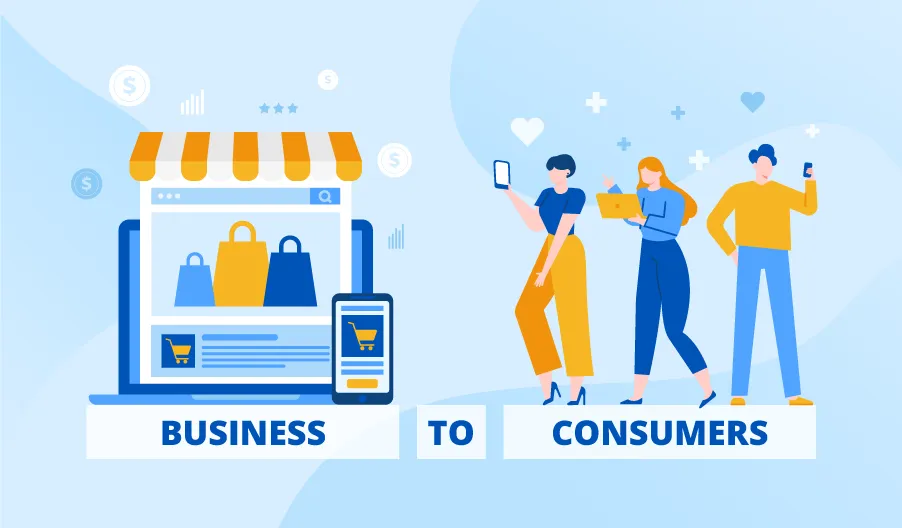
The B2C (Business-to-Consumer) sales process, while sharing some similarities with B2B sales, operates on a distinct dynamic characterized by shorter sales cycles, a broader target audience, and often an emotional connection with the product or service.
Here's an in-depth step-by-step overview of the B2C sales process, combining narrative and bullet-point formats to provide a comprehensive view.
1. Market Research and Segmentation
Understanding your audience begins with thorough market research and segmentation. This initial phase is crucial for tailoring your sales and marketing strategies to meet the diverse needs of your consumer base.
- Consumer Insights: Gather data on consumer behavior, preferences, and trends through surveys, social media analytics, and purchase history. For instance, knowing that 50% of your demographic prefers shopping online can guide your e-commerce strategy.
- Segmentation: Divide your target market into smaller, manageable segments based on demographics, psychographics, and buying behavior. This allows for more personalized and effective marketing efforts.
2. Attracting Consumers
The next step is to attract potential customers to your brand through various marketing channels. The aim is to make consumers aware of your products or services and entice them to learn more.
- Multi-Channel Marketing: Utilize a combination of online and offline marketing channels such as social media, SEO, email marketing, TV ads, and in-store promotions to reach your audience where they spend their time.
- Content Marketing: Create engaging, valuable content that resonates with your target audience. This could include how-to guides, tutorials, and entertaining videos that also educate consumers about your offerings.
3. Engaging and Nurturing
Once you've attracted consumers' attention, the focus shifts to engaging them and nurturing their interest toward making a purchase.
- Personalized Communication: Use targeted email campaigns, personalized offers, and retargeting ads to stay top of mind with potential buyers.
- Customer Journey Optimization: Analyze the customer journey to identify touchpoints where consumers interact with your brand. Optimize these touchpoints to improve the shopping experience, reducing friction points that could deter a purchase.
4. Conversion
This stage is where potential customers make the decision to purchase. The goal here is to make the buying process as seamless and compelling as possible.
- Easy Checkout Process: Simplify the checkout process on your website with clear calls-to-action, multiple payment options, and minimal steps to purchase.
- Incentives: Offer timely incentives such as discounts, free shipping, or limited-time offers to encourage immediate purchases. For example, a "20% off for the next 24 hours" deal can create a sense of urgency.
5. Post-Purchase and Retention
After a purchase, the focus shifts to turning one-time buyers into repeat customers through excellent post-purchase support and engagement.
- Customer Support: Provide exceptional customer service with multiple channels for support, including live chat, email, and phone. Efficiently resolving issues can turn a dissatisfied customer into a loyal advocate.
- Loyalty Programs: Implement loyalty programs that reward repeat purchases with discounts, exclusive access, or free products. This not only incentivizes repeat business but also strengthens the emotional connection with your brand.
6. Gathering Feedback and Continuous Improvement
Continuous improvement is key to refining your sales process and product offerings based on customer feedback.
- Feedback Loops: Solicit feedback through surveys, social media, and product reviews. Understanding what customers love or dislike helps inform product development and marketing strategies.
- Data-Driven Decisions: Use sales data and customer feedback to make informed decisions about future product lines, marketing campaigns, and sales strategies. This ensures your offerings remain relevant and appealing to your target market.
Role of Sales Teams and Sales Reps in B2C and B2B Sales Process
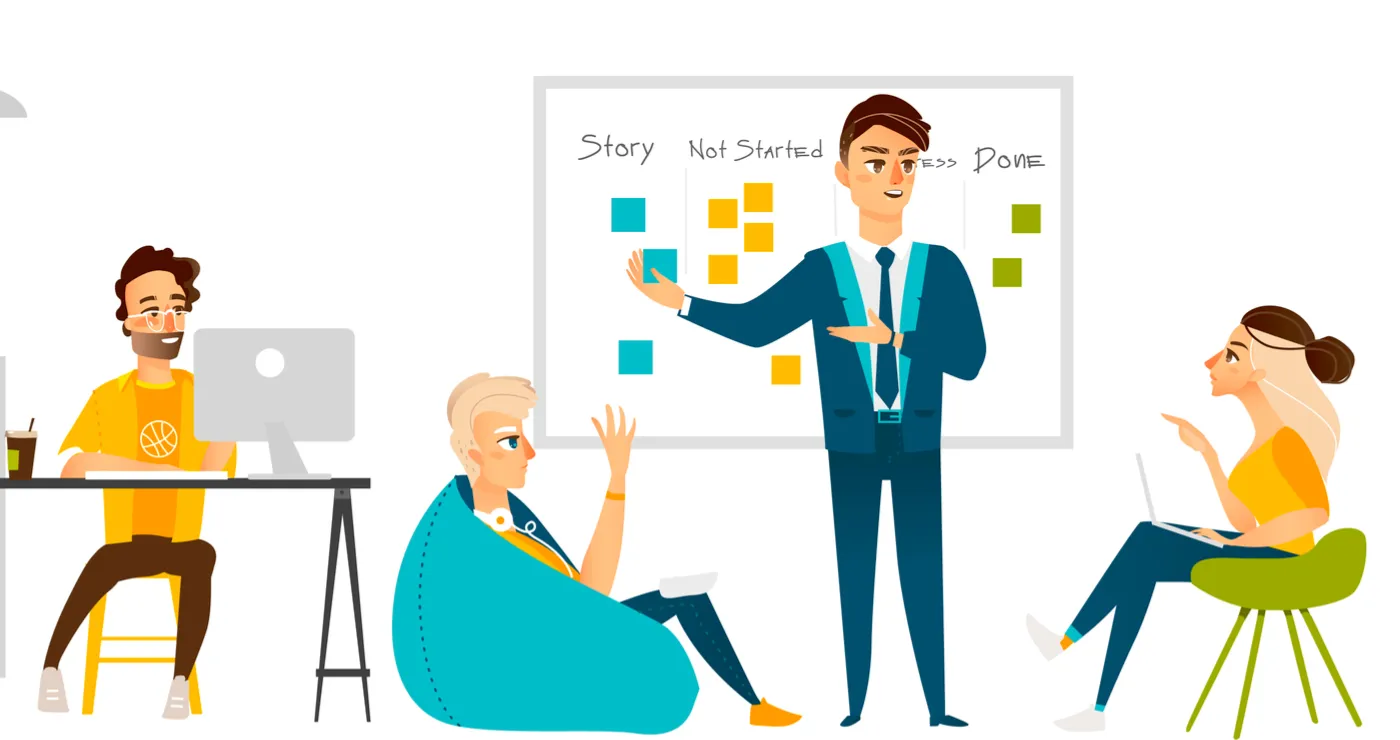
The roles of sales team and sales representatives vary significantly between B2C and B2B contexts, reflecting the distinct nature of each sales process.
While both roles are critical to driving revenue, the strategies, skills, and activities involved are tailored to the unique challenges and opportunities presented by each market.
Role in B2B Sales Process
In the B2B sales process, the complexity of transactions, longer sales cycles, and the necessity of engaging multiple stakeholders place sales teams and reps at the core of strategic planning and execution of a sales funnel
1. Strategic Planning
Sales teams in B2B contexts are involved in developing strategic plans that align with the business goals of their potential clients. They must understand industry trends, competitor offerings, and the specific needs of each client to tailor their sales approach effectively.
2. Relationship Building
B2B sales reps play a crucial role in building and maintaining long-term relationships with clients. Given the longer sales cycles and the significance of repeat business in B2B markets, sales reps must establish trust, demonstrate reliability, and become trusted advisors to their clients.
3. Customized Solutions
Sales reps are responsible for understanding the unique challenges faced by each client and proposing customized solutions. This involves a deep knowledge of their own product or service offerings, as well as the ability to creatively address the client's specific pain points and business objectives.
4. Negotiation and Closing
Given the larger contract values and more complex negotiation processes in B2B sales, reps must possess strong negotiation skills. They are responsible for navigating discussions on pricing, terms, and implementation, ensuring a mutually beneficial agreement is reached.
5. Ongoing Support and Upselling
After the sale, B2B sales teams continue to play a vital role in ensuring client satisfaction, addressing any issues that arise, and identifying opportunities for upselling or cross-selling additional products or services.
Role in B2C Sales Process
In the B2C sales process, the focus shifts towards volume, efficiency, and creating a seamless, engaging customer experience. Sales teams and reps must adapt to the faster pace and emotional drivers of consumer purchasing decisions.
1. Customer Experience
In B2C sales, the sales team's primary role is to optimize the customer experience at every touchpoint, from initial engagement through to purchase and post-purchase support. This includes ensuring the availability of product information, facilitating easy navigation of e-commerce sites, and providing prompt customer service.
2. Product Knowledge and Demonstration
Sales reps must have in-depth knowledge of the products they are selling and be able to demonstrate their features and benefits effectively. In retail settings, this might involve live demonstrations or personalized consultations.
3. Rapid Transaction Processing
Given the higher volume of transactions in B2C sales, reps need to process sales quickly and efficiently, minimizing wait times and ensuring a smooth checkout process, whether in-store or online.
4. Handling Inquiries and Objections
Sales reps are often the first point of contact for customer inquiries and objections. They must be equipped to provide accurate information, address concerns, and persuade undecided customers, all while maintaining a positive, customer-friendly attitude.
5. Feedback Collection
Sales teams in B2C settings also play a crucial role in gathering customer feedback, whether through direct interactions, surveys, or monitoring online reviews. This feedback is essential for continuous improvement of products, services, and the overall customer experience.
Best Strategies to Excel in B2B Sales Mastery
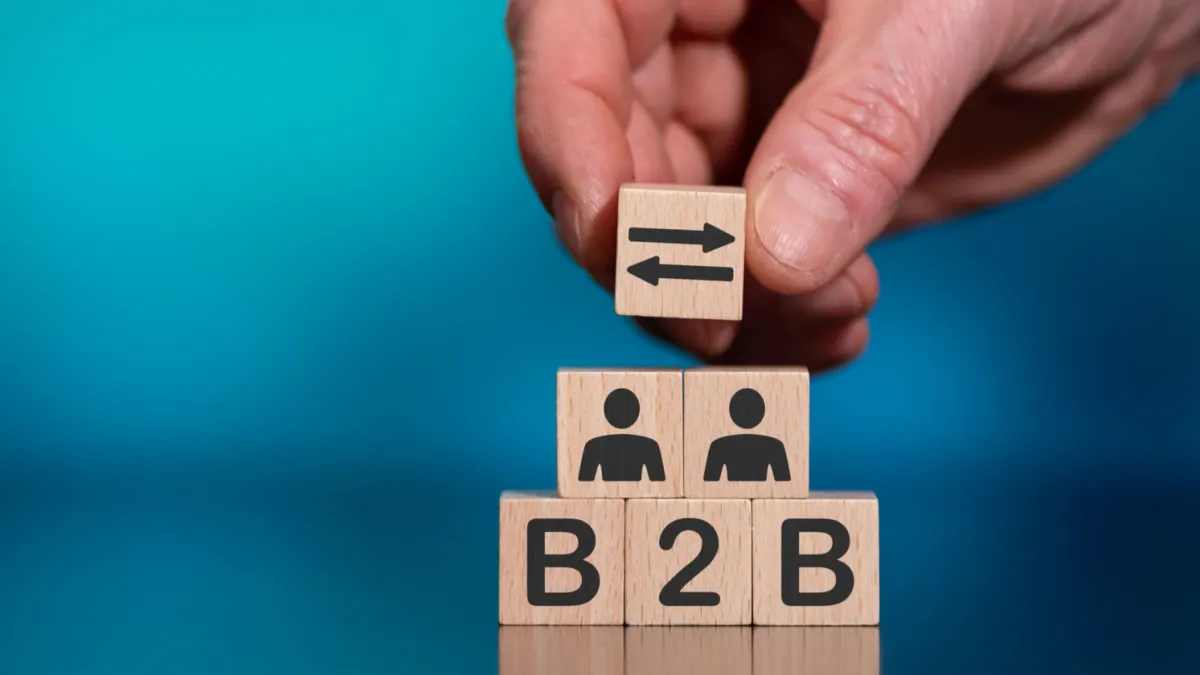
To excel in B2B sales mastery, adopting a strategic and informed approach is essential. Given the complexity of B2B transactions, longer sales cycles, and the need for a consultative selling style, certain strategies stand out for their effectiveness in navigating these challenges.
Below are the best strategies to excel in B2B sales, blending narrative and bullet-point formats for a comprehensive understanding.
Leverage Data-Driven Insights
Utilize CRM and Sales Analytics: Implement a robust CRM system and use sales analytics to track and analyze customer interactions, sales performance, and market trends. Data-driven insights can help you identify opportunities, optimize your sales process, and personalize your approach.
- According to Salesforce Research, high-performing sales teams are 1.5 times more likely to base actions on data-driven insights.
- Regularly review CRM data to adjust your sales strategies, focusing on the most profitable leads and opportunities.
Focus on Relationship Building
Cultivate Long-term Partnerships: Prioritize building trust and establishing long-term relationships with your clients. Understand their business goals, challenges, and industry trends to position yourself as a valuable resource.
- Strong relationships lead to repeat business and referrals, which are crucial for sustained success in B2B sales.
- Regularly check in with clients, offer helpful insights, and stay engaged even when they're not actively purchasing.
Employ Account-Based Marketing (ABM)
Implement Targeted Campaigns: Align sales and marketing efforts to focus on key accounts with the highest potential. Create personalized marketing campaigns that speak directly to the needs and interests of these accounts.
- ABM can significantly improve conversion rates and ROI by concentrating resources on prospects most likely to become high-value customers.
- Collaborate with marketing teams to develop tailored content and outreach strategies for each target account, based on their specific challenges and goals.
Develop a Consultative Selling Approach
Solve Problems, Don't Just Sell: Shift from a product-centric to a problem-solving approach. Focus on understanding your client's challenges and offer solutions that drive their business forward.
- B2B buyers are looking for partners who can contribute to their success, not just suppliers.
- Train your sales team in consultative selling techniques, emphasizing active listening, empathy, and solution-based selling.
Invest in Continuous Learning and Training
Stay Informed and Skilled: The B2B landscape is constantly evolving, with new technologies, changing buyer behaviors, and competitive pressures. Keeping your sales team informed and skilled is critical.
- A knowledgeable sales team can more effectively connect with clients, understand their needs, and propose relevant solutions.
- Implement ongoing training programs that cover product knowledge, market trends, sales techniques, and technological tools.
Embrace Technology and Automation
Utilize Sales Enablement Tools: Leverage technology to streamline your sales process, enhance productivity, and improve customer engagement. Tools like email automation, sales enablement platforms, and virtual meeting software can make a significant difference.
- Automation and technology can free up time for sales reps to focus on building relationships and closing deals, rather than getting bogged down by administrative tasks.
- Identify repetitive tasks in your sales process and adopt tools that can automate these tasks, ensuring your team focuses on high-impact activities.
Best Strategies to Excel in B2C Sales Mastery

To achieve excellence in B2C sales, mastering a variety of strategies that cater to the direct consumer market is crucial. The B2C landscape is characterized by faster sales cycles, emotional buying decisions, and the need for mass market appeal.
Here are the best strategies to excel in B2C sales, integrating both detailed explanations and concise bullet points to offer depth and clarity.
Understand Your Consumer
Consumer Behavior Analysis: Use data analytics to understand consumer buying behaviors, preferences, and trends. This insight allows for personalized marketing and sales strategies that resonate with your target audience.
- A deeper understanding of your consumer can lead to more effective targeting and increased conversion rates. For example, 80% of consumers are more likely to purchase from brands that offer personalized experiences.
- Implement tools like Google Analytics and customer relationship management (CRM) systems to gather and analyze consumer data.
Optimize Online Presence
E-commerce Excellence: Ensure your online store is user-friendly, with an intuitive interface, detailed product information, and a seamless checkout process.
- With the majority of consumers shopping online, a frictionless e-commerce experience can significantly boost sales.
- Conduct user experience (UX) research and A/B testing to continuously improve your website’s performance.
Leverage Social Media Marketing
Engaging Content: Create and share engaging, valuable content on social media platforms tailored to the interests of your target demographic.
- Social media is a powerful tool for building brand awareness and engaging directly with consumers. Effective social media marketing can drive traffic to your website and increase sales.
- Use a mix of educational, entertaining, and promotional content to keep your audience engaged and informed about your products.
Personalize the Customer Journey
Customized Marketing Campaigns: Utilize consumer data to create personalized marketing campaigns that address the specific needs and desires of your audience.
- Personalized marketing has been shown to significantly increase engagement and conversion rates, as consumers are more likely to respond to content that feels relevant to them.
- Segment your market based on consumer behavior and preferences, and tailor your messaging and offers accordingly.
Implement Efficient Customer Service
Rapid Response Systems: Develop a customer service strategy that prioritizes quick and effective responses to inquiries and issues.
- Excellent customer service can differentiate your brand, build loyalty, and encourage repeat business. A positive customer service experience can turn a one-time buyer into a lifelong customer.
- Use chatbots for instant responses and have a dedicated team to handle more complex queries through phone, email, or social media.
Encourage Reviews and Testimonials
Social Proof: Actively encourage satisfied customers to leave reviews and testimonials on your website and social media platforms.
- Reviews and testimonials serve as social proof, increasing the credibility of your products and brand. Consumers often look for reviews before making a purchase decision.
- Implement an automated follow-up email asking customers to review their purchase and offer incentives for leaving a review.
Continuously Monitor and Adapt
Market Trend Analysis: Stay informed about the latest market trends and consumer preferences to ensure your product offerings and marketing strategies remain relevant which can help your sales rep in further lead generation
- The consumer market is dynamic, with trends and preferences evolving rapidly. Staying ahead of these changes can keep your brand competitive and appealing to consumers.
- Use market research tools and social listening platforms to keep track of industry trends and consumer feedback.
Insights to Increase Your B2B and B2C Sales
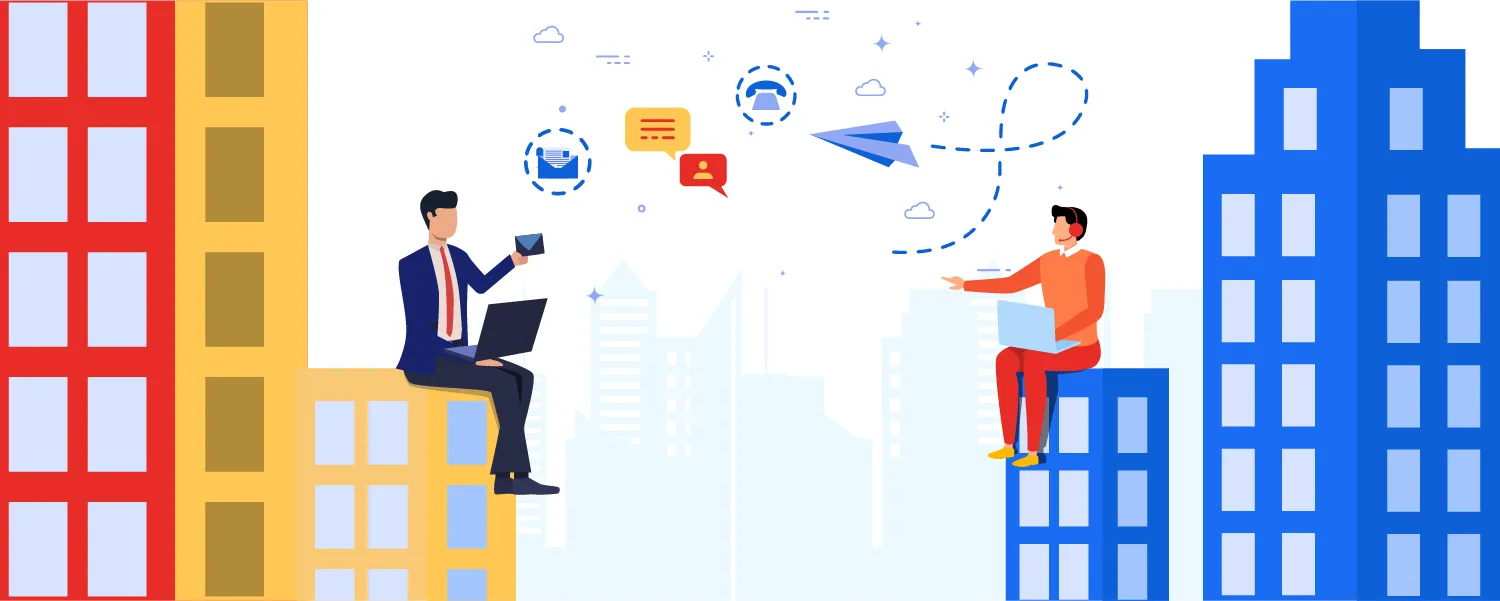
Data-driven strategies enable businesses to tailor their sales efforts more effectively, targeting the right prospects with the right message at the right time.
B2B Insights
Below we have pivotal insights and statistics that can help shape your B2B sales strategies for better results.
1. Digital Engagement is Key: 70% of B2B decision-makers prefer remote or digital interactions. Emphasizing a digital-first sales approach is crucial for modern B2B sales strategies.
2. Customer Experience as a Differentiator: 80% of customers view the experience a company provides as equally important as its products or services, underlining the importance of superior customer experience in B2B sales.
3. Content Marketing Drives Leads: Content marketing generates three times as many leads as outbound marketing and costs 62% less, making it a highly effective strategy for B2B sales.
4. Continuous Training and Development: 76% of sales professionals believe adapting to new selling tools and practices has been key to their success, highlighting the need for ongoing training and skill enhancement.
5. Account-Based Marketing Delivers Higher ROI: 87% of B2B marketers report that ABM delivers a higher ROI than other marketing activities, emphasizing its effectiveness in B2B sales strategies.
6. Buying Committees are Complex: The typical B2B solution buying group involves six to ten decision-makers, necessitating a multi-faceted approach to address the needs and concerns of each stakeholder.
B2C Insights
Below we have pivotal insights and statistics that can help shape your B2C sales strategies for better results.
1. E-commerce Growth: E-commerce sales are projected to reach $6.5 trillion by 2023, signaling the increasing importance of a strong online presence for B2C businesses.
2. Importance of Mobile Optimization: 50% of consumers say they will not purchase from a brand again if they have a poor mobile experience, emphasizing the need for mobile-optimized websites and shopping platforms.
3. Personalization Enhances Engagement: Personalized email campaigns drive 6x higher transaction rates, illustrating the effectiveness of personalized marketing in engaging consumers and boosting sales.
4. Social Media Influences Purchasing Decisions: 87% of e-commerce shoppers believe social media helps them make shopping decisions, highlighting the role of social media in the consumer purchase journey.
5. Customer Reviews Boost Confidence: Products with customer reviews are 270% more likely to be bought than products without, underlining the importance of leveraging customer feedback to build trust and increase sales.
6. Video Content Drives Sales: Including a video on a landing page can increase conversions by 80%, demonstrating the power of video content in engaging consumers and enhancing product understanding.
7. Fast Shipping is a Competitive Advantage: 41% of consumers are willing to pay a charge for same-day delivery, indicating that faster shipping options can be a significant factor in winning sales.
8. User Experience is Critical: A one-second delay in page response can result in a 7% reduction in conversions, pointing to the critical impact of website performance on sales success.
Best Tools to Use for Your B2B and B2C Sales
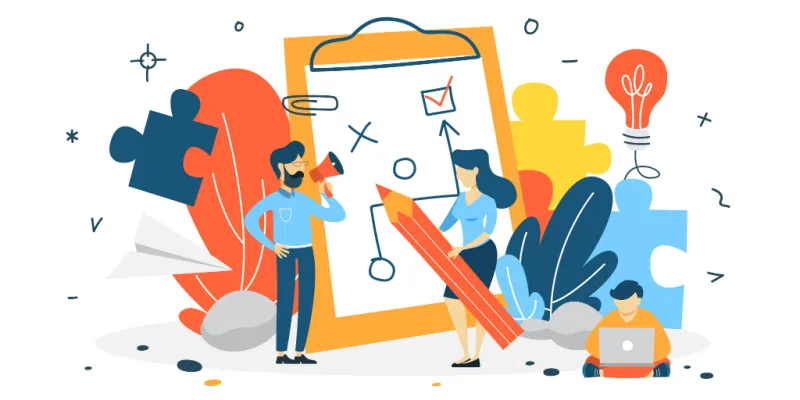
Selecting the right tools is essential for enhancing both B2B and B2C sales processes. These tools can streamline operations, improve customer engagement, and drive sales growth. Below are recommended tools categorized by their utility for both B2B and B2C sales environments:
CRM Software
For B2B: Salesforce
- Salesforce is renowned for its comprehensive features that cater to complex B2B sales cycles, including lead management, account planning, and sales forecasting.
- It integrates with a multitude of other tools and platforms, allowing for a seamless sales process from prospecting to closing.
For B2C: HubSpot CRM
- HubSpot offers a free, user-friendly CRM platform that scales with your business, making it ideal for B2C companies looking to manage customer interactions efficiently.
- Use it to track customer interactions, manage leads, and automate email marketing campaigns for more personalized customer experiences.
Email Marketing
For B2B: Mailchimp
- Mailchimp's advanced segmentation and automation features make it suitable for nurturing B2B leads through tailored content.
- Utilize its A/B testing and analytics to refine your email campaigns for better engagement and conversion rates.
For B2C: Klaviyo
- Klaviyo specializes in e-commerce marketing, offering powerful tools for personalization and automation that are crucial for driving B2C sales.
- Leverage its integration with e-commerce platforms to create personalized, behavior-based email campaigns.
Social Media Management
Common Tool: Hootsuite
- Hootsuite supports both B2B and B2C sales strategies by allowing businesses to manage all their social media channels from a single dashboard, streamline posting, and monitor engagement.
- Schedule content, track mentions of your brand, and analyze social media traffic to refine your strategy.
E-commerce Platform
For B2B: Magento (Adobe Commerce)
- Magento offers robust e-commerce solutions with B2B-specific features like custom pricing, bulk ordering, and account management.
- Customize your e-commerce site to cater to business buyers, offering a seamless purchasing experience that can handle complex B2B transactions.
For B2C: Shopify
- Shopify is an all-in-one e-commerce platform that's user-friendly and scalable, ideal for B2C businesses looking to grow their online sales.
- Use its extensive app store to add features and integrations that enhance the shopping experience for your customers. Popular choices include Yoast for SEO and accessiBe for accessibility.
Analytics and Data Analysis
Common Tool: Google Analytics
- Essential for both B2B and B2C, Google Analytics provides deep insights into website traffic, user behavior, and conversion tracking to inform strategic decisions.
- Set up goals and conversion tracking to measure the effectiveness of your sales and marketing efforts, and use the insights to optimize your funnel.
Customer Support
For B2B: Zendesk
- Zendesk offers a suite of tools perfect for managing B2B customer relations, including ticketing systems, knowledge bases, and live chat options.
- Implement Zendesk to streamline support requests, improve response times, and maintain high levels of customer satisfaction in complex B2B environments.
For B2C: LiveChat
- LiveChat provides an instant communication channel for B2C companies to engage with customers in real-time, enhancing the overall shopping experience.
- Integrate LiveChat on your website to assist customers during their buying journey, from answering product questions to troubleshooting checkout issues.
Concluding thoughts on Mastering B2B and B2C Sales for Business Growth
To be great at selling to businesses (B2B) or directly to customers (B2C), it's important to know they are different. B2C is all about connecting quickly with people, using stories they relate to, and making the buying process easy. B2B needs you to build strong, ongoing relationships, show how your product can really help a business, and talk to several people before making a sale. Both need you to use data smartly to make better decisions.
For sales leaders, it's crucial to adapt and learn constantly, whether selling to a single person or a whole company. Keeping up with tech and understanding your buyer will help you succeed in both B2C and B2B sales.





.jpg)

.jpg)
